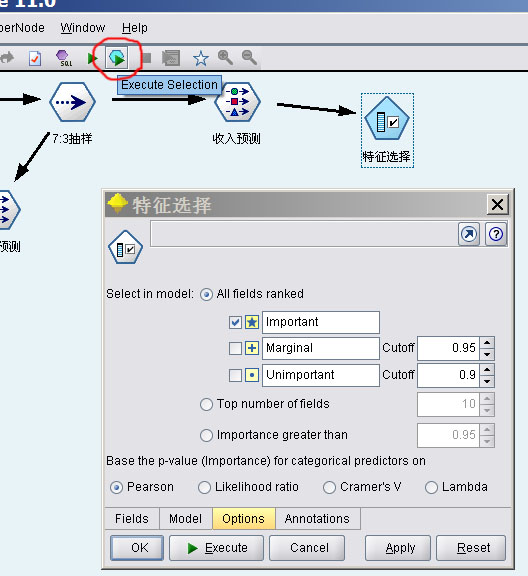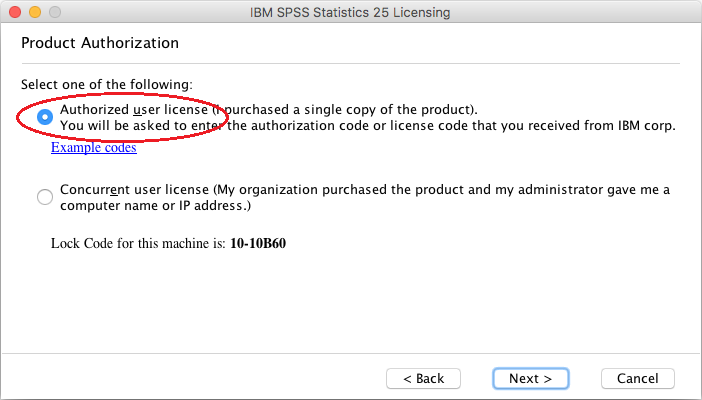
- #Spss clementine 12 统计数据挖掘工具 install
- #Spss clementine 12 统计数据挖掘工具 upgrade
- #Spss clementine 12 统计数据挖掘工具 full
Assist you with variable classification: featurewiz classifies variables automatically.That way, you don’t have to preprocess your data before using featurewiz Automatically pre-process data: you can send in your entire dataframe as is and featurewiz will classify and change/label encode categorical variables changes to help XGBoost processing.

Your experience may vary).įeaturewiz is every Data Scientist’s feature wizard that will: In most cases, featurewiz builds models with 20%-99% fewer features than your original data set with nearly the same or slightly lower performance (this is based on my trials.
#Spss clementine 12 统计数据挖掘工具 install
Use $ pip install featurewiz -upgrade -ignore-installedįeaturewiz was designed for selecting High Performance variables with the fewest steps.
#Spss clementine 12 统计数据挖掘工具 upgrade
To upgrade to the best, most stable and full-featured version always do the following:
Feature Engineering: You can add as many variables as you want and as the last step before modeling, you can perform feature selection with featurewiz. Most variables are included: It automatically detects types of variables in your data set and converts them to numeric except date-time, NLP and large-text variables. Combine all selected features and de-duplicate them.  Then take next set of vars and find top X. Find top X features (could be 10) on train using valid for early stopping (to prevent over-fitting).
Then take next set of vars and find top X. Find top X features (could be 10) on train using valid for early stopping (to prevent over-fitting). #Spss clementine 12 统计数据挖掘工具 full
Select all variables in data set and the full data split into train and valid sets. Once have done SULOV method, now select the best variables using XGBoost feature important but apply it recursively to smaller and smaller sets of data in your data set. The Recursive XGBoost method is explained in this chart below. Recursive XGBoost: Once SULOV has selected variables that have high mutual information scores with least less correlation amongst them, we use XGBoost to repeatedly find best features among the remaining variables after SULOV. What’s left is the ones with the highest Information scores and least correlation with each other. Now take each pair of correlated variables, then knock off the one with the lower MIS score. So its suitable for all kinds of variables and target.  Then find their MIS score (Mutual Information Score) to the target variable. Find all the pairs of highly correlated variables exceeding a correlation threshold (say absolute(0.7)). Here is a simple way of explaining how it works: Additionally, SULOV can also mean: “Searching for Uncorrelated List Of Variables” THIS METHOD IS KNOWN AS SULOV METHOD in memory of my mom, SULOCHANA SESHADRI. The SULOV method is explained in this chart below. SULOV -> SULOV means Searching for Uncorrelated List of Variables. Two methods are used in this version of featurewiz: Featurewiz is a new python library for selecting the best features in your data set fast! (featurewiz logo created using Wix)
Then find their MIS score (Mutual Information Score) to the target variable. Find all the pairs of highly correlated variables exceeding a correlation threshold (say absolute(0.7)). Here is a simple way of explaining how it works: Additionally, SULOV can also mean: “Searching for Uncorrelated List Of Variables” THIS METHOD IS KNOWN AS SULOV METHOD in memory of my mom, SULOCHANA SESHADRI. The SULOV method is explained in this chart below. SULOV -> SULOV means Searching for Uncorrelated List of Variables. Two methods are used in this version of featurewiz: Featurewiz is a new python library for selecting the best features in your data set fast! (featurewiz logo created using Wix)







 0 kommentar(er)
0 kommentar(er)
